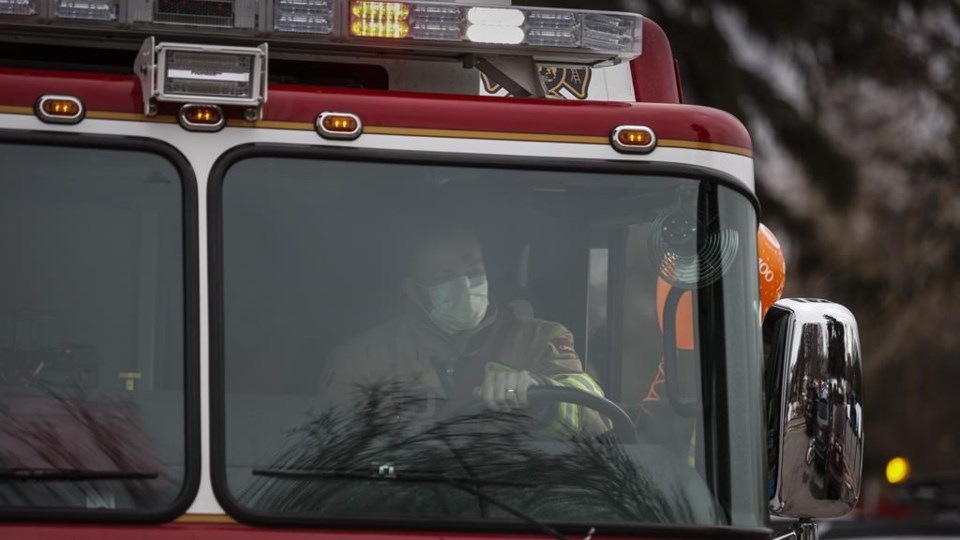A 10-year-old girl who died after a house fire on a northern Ontario First Nation might still be alive if firefighting and prevention resources her community has been seeking were in place, an organization representing 49 First Nations said Thursday.
The Nishnawbe Aski Nation said the tragedy that took place Saturday on Weenusk First Nation, in Peawanuck, Ont., highlighted the lack of resources and support on First Nations to fight fires.
NAN Deputy Grand Chief Anna Betty Achneepineskum said the fire also displaced nine others living in the home and left the community in a deep state of sadness.
"I heard from the community that people were grabbing their fire extinguishers and running to try to to fight the fire ... but, perhaps, if we had the services and the resources, we could have saved a life," Achneepineskum said in a phone interview Thursday.
"Peawanuck is one of the furthest north communities within the NAN territory and so it was very cold. But that didn't stop the people from coming out to try to help. I'm grateful that there weren't other lives lost."
Nine people from the home had to be flown to a nearby First Nation because they needed treatment for smoke inhalation, she said. They have since been discharged from hospital and a GoFundMe for the family says they have been living in the First Nation's band office.
"They had to be taken out ... because they ran out of oxygen in the community. That is another example of inadequate access to health care, and also to fire response," Achneepineskum said.
Achneepineskum said fires have killed too many Indigenous people over the years.
In the last decade, the community of Sandy Lake First Nation lost three children, Mishkeegogamang First Nation lost four people including two young children, Pikangikum First Nation lost nine people including a baby and two young children, and in Fort Severn First Nation a fire claimed the life of one person, she said.
"And that's just in our territory."
She noted a report by Ontario's chief coroner that found in 2021 that First Nation children under 10 had a fire-related mortality rate 86 times greater than non-First Nation children.
Achneepineskum also said a report by the National Indigenous Fire Safety Council found people living on-reserve are five times more likely to die in a fire.
Indigenous Services Canada said in a written statement that the government approved funding for a $506,640 fire truck for Weenusk First Nation last year.
"This fire truck will replace the previous 1996 model that is currently in the community," said spokesperson Nicolas Moquin.
Achneepineskum said the new truck is still stuck in Winnipeg because it hasn't been cold enough for it to travel on ice roads that lead to the remote, fly-in First Nation located 30 kilometres from the southern coast of Hudson Bay. There also isn't a place to store it and maintain it, she added.
Moquin said Indigenous Services Canada recognizes that fires like the one that broke out Saturday profoundly affect entire First Nations, and government representatives have been speaking with the community to ensure that its leadership is well supported. Health workers have also been sent to the community, the government said.
"Our thoughts are with all community members, particularly with family members and First Nation leaders who worked so hard to respond to this tragic event. We will continue to provide support to the community in critical fire safety prevention, education and protection work," Moquin said in a email.
"ISC and the Assembly of First Nations are also working together to finalize a new Fire Protection Strategy, the goal of which is to better inform program and policy decision-making and guide federal investments to promote fire protection on reserves and to reduce the risk of fire-related deaths and injuries, as well as infrastructure losses."
The government said it also provides nearly $10,500 annually for the recruitment and training of volunteer firefighters in the community and has provided funding for the repair of three fire hydrants. It also said it bought smoke alarms for homes in the community and noted Weenusk First Nation receives $50,000 annually to help with fire or flooding emergencies.
Achneepineskum said the hydrants don't have sufficient water pressure and there hasn't been enough funding to hire someone to install the smoke alarms in every home.
She also said fire prevention education sessions funded by the federal government were delayed by the pandemic.
"Our prayers have been with the family, first responders, and the entire Peawanuck community since we learned about this tragedy," she said.
"We join them in mourning the passing of this beautiful child whose young life was taken under the most tragic and heartbreaking of circumstances."
This report by The Canadian Press was first published Feb. 2, 2023.
Fakiha Baig, The Canadian Press

